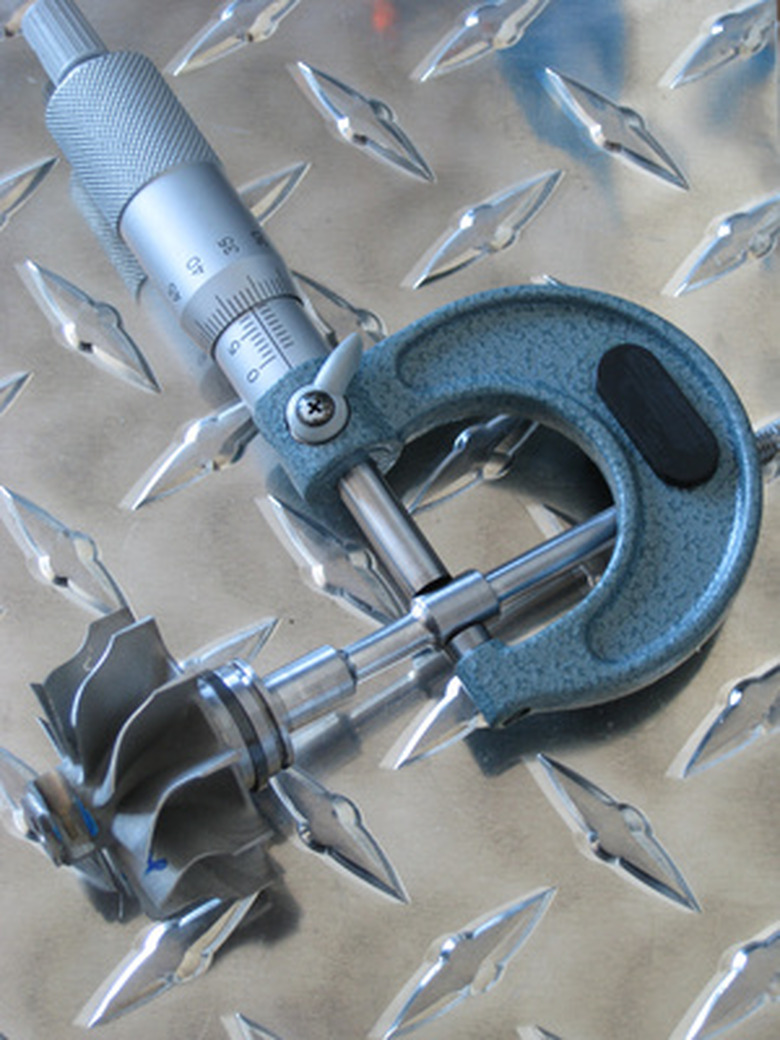How To Measure The Volume Of Marbles
You can measure the volume of a marble a couple of different ways. One is by direct measurement of the diameter. Another is by displacement when submerged in water. The latter may be more appropriate if you want to find the volume of a large number of marbles at once. Water displacement is best measured with what is called a "Eureka can," or overflow jar. Such a can has a side spout that slants downward to localize the displaced overflow.
Individual Marble
Step 1
Measure the diameter of a marble with a micrometer. Denote its diameter with the letter D.
Step 2
Use the formula 4/3_?_R^3, to solve for the volume. Here, R is the radius, or half of D. ^3 means the radius is cubed.
Step 3
Repeat Steps 1 and 2 for several angles of the marble, and average the resulting volume calculations. For a round marble, the results should be the same.
Several Marbles
Step 1
Fill a Eureka can until the side spout starts emptying water.
Step 2
Weigh in grams the container in which you'll catch the water overflow from the side spout.
Step 3
Drop the marbles gently one by one into the Eureka can. You don't want to cause waves that would come out of the can; that would lead to an overestimate of the marbles' volume.
Step 4
Weigh the container again. Find the difference from the weight you found in Step 2. This is the weight of the displaced water. Water has a density of 1.00 grams per cubic centimeter. So the weight of the displaced water in grams equals the volume of the displaced water in cubic centimeters.
Step 5
Divide the volume found in Step 4 by the number of marbles to get the volume of one marble, if the marbles are all the same size.
Things Needed
- Micrometer
- Eureka can
Cite This Article
MLA
Dohrman, Paul. "How To Measure The Volume Of Marbles" sciencing.com, https://www.sciencing.com/measure-volume-marbles-6068455/. 24 April 2017.
APA
Dohrman, Paul. (2017, April 24). How To Measure The Volume Of Marbles. sciencing.com. Retrieved from https://www.sciencing.com/measure-volume-marbles-6068455/
Chicago
Dohrman, Paul. How To Measure The Volume Of Marbles last modified March 24, 2022. https://www.sciencing.com/measure-volume-marbles-6068455/
